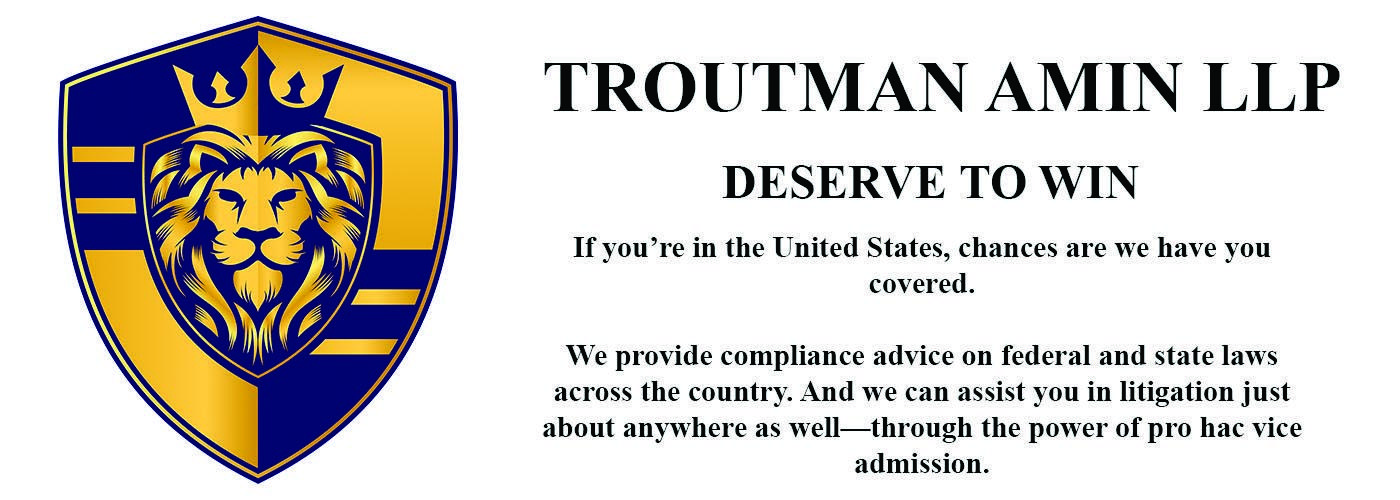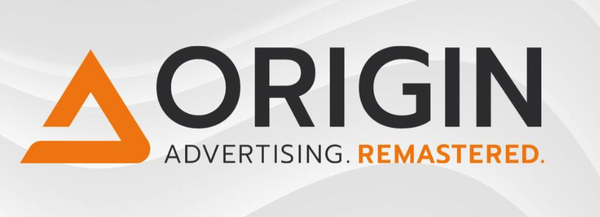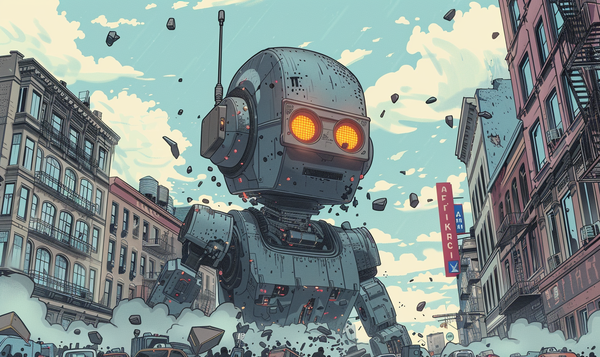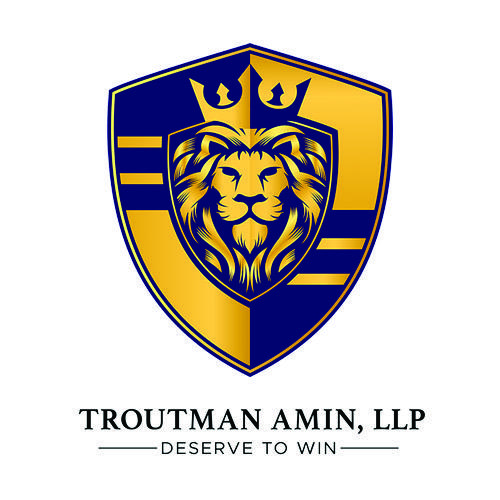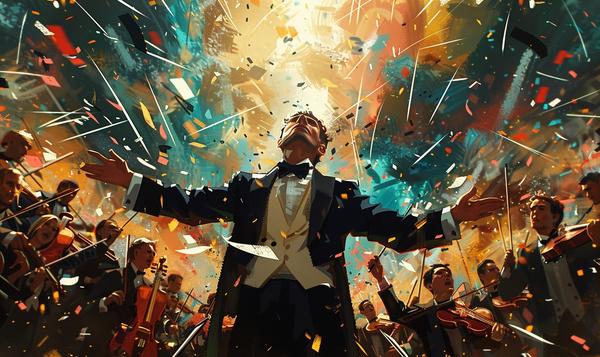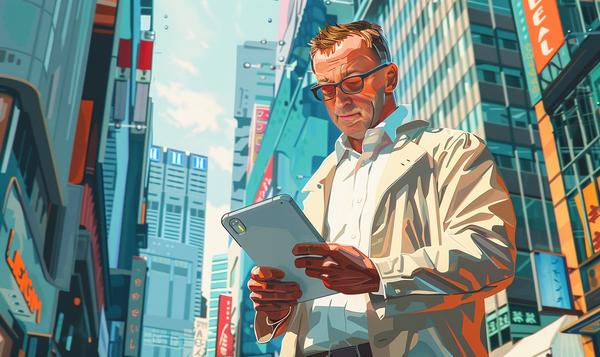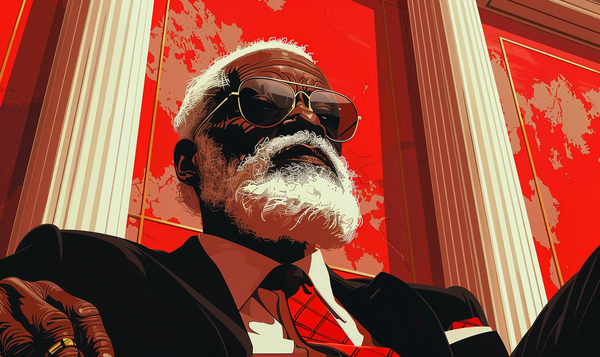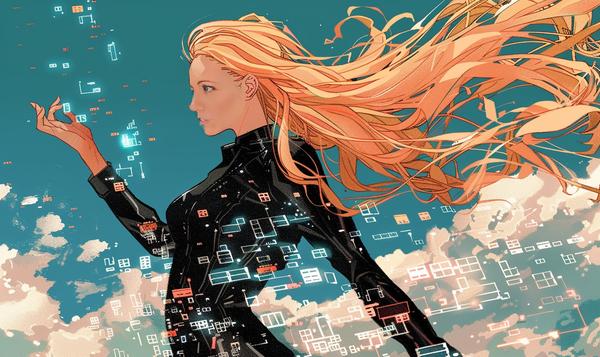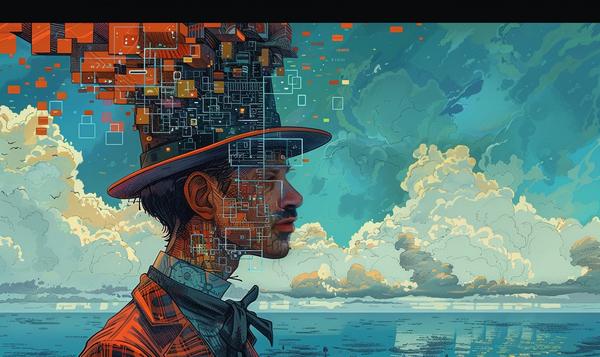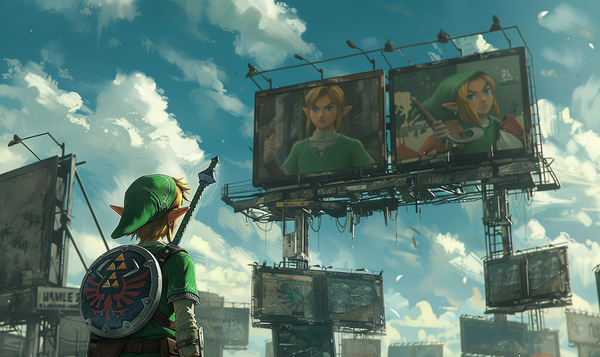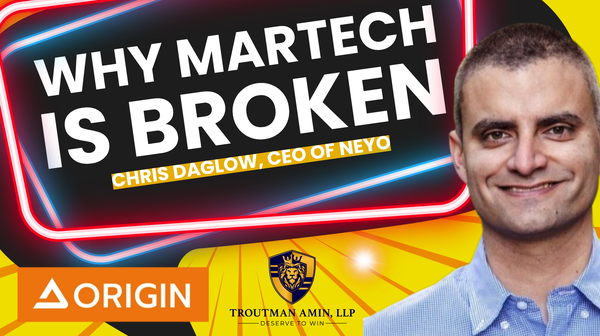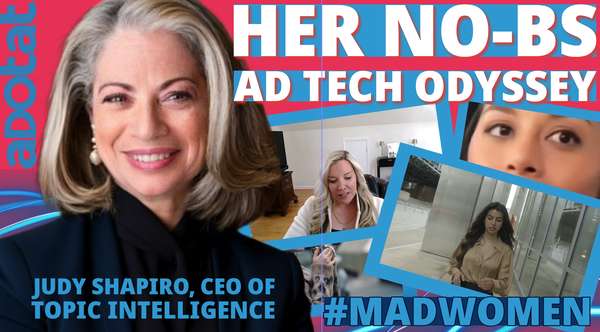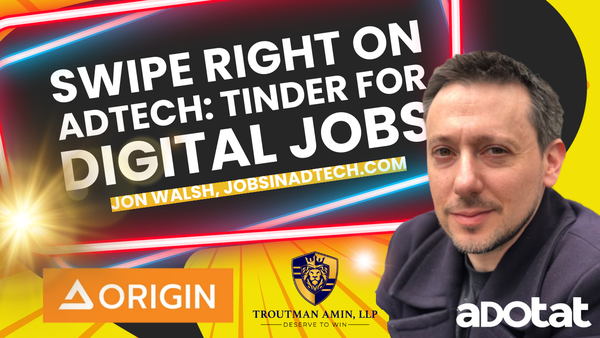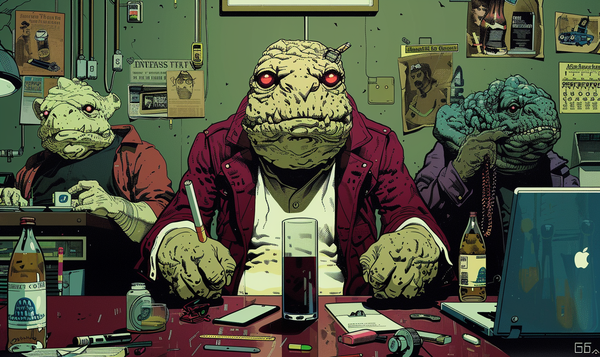Generative AI is that unruly guest at the marketing table who doesn’t care about your carefully planned menus or your perfectly set timelines—it’s flipping the table and demanding a new feast entirely. For every CMO still lounging in analysis paralysis, it’s time to wake up and smell the algorithms because AI is already rewriting the rules of the game, and those not
playing are about to be left in the dust.
Pinterest Is Dropping the AI Hammer—And You Should Be Too
Pinterest has been quietly building a generative AI arsenal, like Batman preparing for a showdown with the Joker, but with way more pastel colors and mood boards. Their Pinterest Performance+ platform lets advertisers turn basic backgrounds into stunning “lifestyle imagery” that makes your products look
like they belong in Architectural Digest. Walgreens tested this on 50 products, including a perfume bottle that went from “meh” to showroom centerpiece, driving a 55% increase in click-through rates. That’s not a typo—55%. If you’re still wondering if AI is worth the hype, that statistic should be the equivalent of a bucket of cold water.
Pinterest’s VP of Product, Matt Crystal, even referred to AI as their “special sauce,” because
it knows the difference between someone who loves mid-century modern and someone who’s all about maximalism based on their platform behavior. In other words, your Pinterest ads could be so personalized, it’s like AI has been reading your customers' diaries.
Microsoft, Meta, and the Generative AI Arms Race
Meanwhile, Microsoft’s like that nerd in high school who went from awkward to running the tech empire. They’ve taken Copilot, originally the dorky
sidekick for Office apps, and turned it into the AI powerhouse of advertising tools. Now, it’s not just about crafting slick PowerPoint decks. Microsoft’s Copilot is embedded into every nook and cranny of the digital ad space, from generating high-quality images and video ads to helping advertisers figure out performance metrics faster than you can say "A/B test." With their Diagnostics and Performance Snapshot tools, Copilot is like that intern who works 24/7,
obsessing over your campaign performance, spotting errors, and giving you a full rundown of what’s working and what’s tanking—basically doing all the grunt work, so your team can focus on actual strategy.
The game-changer here? Copilot doesn’t just offer tools—it’s rethinking how ads show up in conversational spaces like Bing and Edge. Microsoft’s ad guru, Kya Sainsbury-Carter, has made it clear that they’re all-in
on this approach, introducing ad formats like "Compare and Decide" where online shoppers can compare products within an AI-driven chatbot experience. It’s not just reactive advertising anymore; it’s interactive, predictive, and always on the ball, bringing a whole new dimension to user engagement. Microsoft has also embedded ad voice into Copilot, making ads feel like they belong to the natural flow of conversation rather than clunky interruptions. Advertisers can expect more
control and transparency while generating ads that feel less like ads and more like helpful, timely advice.
Meta, on the other hand, isn’t playing catch-up—they’re rewriting the rules. The Llama AI models they’ve rolled out are pumping out millions of ads, and it’s not slowing down. Over 15 million ads were generated in the past month alone, which means Meta is turning what used to be laborious creative processes into a fast,
efficient machine. But it doesn’t stop at images and video. Meta’s experimenting with giving users control over how ads look, like letting them tweak colors or copy to match their tastes. Imagine giving consumers the power to personalize the ads they see, turning every user into a co-creator. It’s like handing out spray cans and letting people tag their own billboards in Times Square—but digital, and way more scalable.
As Max Lenderman from GMR
Marketing put it, generative AI is supercharging the democratization of creativity. It’s no longer just for the big-budget brands. Whether you're a small business or a global giant, you can now create ads with AI that once took entire agencies to pull off. That leaves agencies scrambling to pivot towards more insights-driven strategies because AI is leveling the playing field faster than you can say "Mad Men."
But let's not get too starry-eyed here. While the tech
is impressive, Sam Altman himself has admitted that AI’s famous “hallucinations” are more of a “feature” than a bug. That's a cute way to gloss over the fact that AI can still go off the rails, spewing out incorrect information like it's a natural talent. Plus, there’s the looming issue of data security and copyright. As Microsoft and Meta push deeper into the AI ad world, we’re about to see legal battles over ownership and intellectual property
heat up. And don’t get me started on model hallucinations—those fun moments when the AI decides to invent facts.
Still, even with its flaws, the productivity boost from generative AI is undeniable. McKinsey estimates that AI could add $4.4 trillion in annual productivity, with marketing reaping a huge slice of that pie. So, CMOs, if you’re not leaning into AI yet, you might want to start rethinking your strategy before your
competitors start wiping the floor with you using AI-generated campaigns, while you’re still stuck on spreadsheets and endless rounds of copy edits.
In short? Generative AI isn’t just changing the rules of the game—it’s rewriting the whole playbook. Those who adapt will thrive, and those who don’t? Well, let’s just say you might want to update your résumé.
The Democratization of Creativity—Or How AI Puts Your Agency on Red Alert
The big boys like Pinterest and Microsoft aren’t the only ones revolutionizing advertising. Generative AI is democratizing creativity across the board, and brands that never dreamed of producing high-end creative content are now doing it faster, better, and at a fraction of the cost. As Max Lenderman aptly put it, “The democratization of creativity is now on steroids.” Generative AI gives brands, big and small, the ability to churn out agency-level assets—from videos to
blog posts—without signing their soul away to Madison Avenue.
This isn’t just a trend; it’s an irreversible shift in the industry. With AI tools like Microsoft Copilot, even the smallest businesses are gaining access to the kind of creative power that once required whole teams of professionals. These tools don’t just generate images or text; they optimize, analyze, and personalize content at a scale that’s never been possible before. With Copilot’s
ad tools, for instance, it’s about moving beyond grunt work—allowing teams to focus on strategy by automating performance snapshots and diagnostics to keep campaigns running smoothly.
For platforms like Canva, AI has redefined what it means to be creative. Even non-creatives—people in sales, finance, or engineering—are using AI to create stunning reports, presentations, and designs. As Kipp Bodnar from HubSpot notes, AI frees
people from the mundane, letting them focus on strategic thinking and storytelling. The result? Faster, smarter, and more visually appealing outputs that can even outshine traditional methods.
Agencies aren’t out of the game yet, but they’re sweating. Sure, they’ll survive, but their roles will pivot drastically toward insights and strategy. The days when you needed an entire creative team to execute a campaign are rapidly becoming as outdated as flip phones. With
tools like Adobe Firefly, creatives are spending less time on menial tasks and more on the stuff that matters, like crafting innovative, boundary-pushing content. According to Adobe’s latest report, over 66% of creative pros say that AI is helping them produce higher-quality work, with many believing it will further enhance their creativity in the future.
Even though AI is empowering more people to be creative, it’s also
transforming the very definition of creativity. It’s no longer just about who can draw the best or write the sharpest copy—it’s about who can guide AI models to generate something new and meaningful. In fact, Jennifer Lame’s Oscar win for editing “Oppenheimer” has sparked debates about how AI’s role in bundling creative components—like visuals, narratives, and research—will reshape what we consider “creative” in this new era.
But it’s not all rosy.
The rapid adoption of generative AI has brought up ethical concerns. As Sam Altman of OpenAI pointed out, the speed of AI’s evolution is mind-blowing—and a little scary. AI's capacity to generate errors or "hallucinations," combined with its transformative impact on blue- and white-collar jobs, raises questions about long-term impacts on employment and creative ownership. Meanwhile, Bill Gates stresses the need for businesses and governments to manage this
transition well, lest they risk massive disruption in the labor market.
So, what’s the takeaway? Agencies and marketers alike need to embrace AI if they want to stay relevant. Generative AI isn’t just leveling the playing field; it’s flipping the whole table. Brands that lean into AI’s potential will unlock unprecedented opportunities to innovate, while those who resist will be left in the dust. As Adobe’s survey reveals, most creatives are already
on board, using AI not just to save time, but to expand their horizons and push the boundaries of what’s possible in advertising.
Let’s Not Ignore the Risks—AI Isn’t Perfect, and It’s Definitely a Little Sketchy
Now, let’s not get carried away with the utopian promises of generative AI. Sam Altman, CEO of OpenAI, has admitted that AI’s infamous “hallucinations” are a “feature, not a bug.” That sounds like a charming way to gloss over the
fact that AI sometimes just makes stuff up. Remember when Google’s Gemini AI falsely claimed the James Webb Space Telescope found a new exoplanet? Yeah, that wasn’t great.
And the legal landscape is a minefield. As Jason Sperling from Innocean USA points out, copyright and licensing for AI-generated content is still up in the air. Who owns the rights? The AI developer? The client? Getty and Adobe are already scrambling to figure out how to monetize
AI-generated ideas. The legal battles are coming, and it’s going to get messy.
AI Is Your New Best Friend—Here’s How to Use It Without Losing Your Soul
Despite its quirks, the pros of generative AI far outweigh the cons, especially for those who are ready to dive in and get their hands dirty. AI isn’t just here to crank out more ads—it’s here to hyper-personalize every single thing. And personalization is the golden ticket to higher
engagement, which is why Pinterest’s AI feels like it’s been shadowing your customers’ every move. This AI knows what your users want before they do—curating content that aligns with their preferences, whether they’re into minimalist decor or maximalist color explosions. The result? Ads that don’t just land—they click with the customer’s moods, tastes, and even aspirations, giving marketers a previously unimaginable level of precision.
This
kind of personalization isn’t a nice-to-have anymore; it’s a must-have. According to McKinsey, AI could potentially inject a staggering $4.4 trillion into yearly global productivity, and marketing is poised to scoop up a hefty 75% of that windfall. Think about it: all the tedious, soul-crushing tasks—resizing ads, running A/B tests, sifting through data to pull insights—AI has got them covered. Your creative team? They can now do what
they were hired to do: be creative. While they’re busy plotting the next award-winning campaign, AI is humming in the background, managing the operational grind that no one wants to deal with.
Tools like Microsoft’s Copilot and Meta’s Llama are already handling the dirty work, allowing brands to push boundaries without pushing their teams to the brink of burnout. AI doesn’t just save time; it creates time by freeing up human
talent to focus on the big ideas, the game-changing innovations that drive real growth. And that’s where the future is headed—marketers and brands who embrace AI will not only thrive, they’ll redefine the industry. Those who don’t? Well, they’ll be left wondering how their competitors are always one step ahead.
Bottom Line: Stop Waiting, Start Doing
If you’re still on the fence about generative AI, let me break it down for you: Inaction is your
biggest enemy. AI is transforming the way ads are created, personalized, and optimized, and the brands that embrace it will leave the slowpokes behind. There’s a reason Kya Sainsbury-Carter from Microsoft calls it “a transformative time for us all”—the future of advertising is here, and it’s generative AI. Those who fail to adopt it will be stuck in the creative Stone Age while their competitors surf the AI wave all the way to the bank.
So, CMOs, quit overthinking and start using AI as the cheat code it is. Whether it's boosting your creative output, generating personalized ad campaigns in real-time, or automating those mind-numbing tasks, generative AI is your new secret weapon. Let it transform your marketing strategy before you find yourself trying to play catch-up in a world that’s already moved on.
DISCUSS THIS TOPIC ON LINKEDIN

